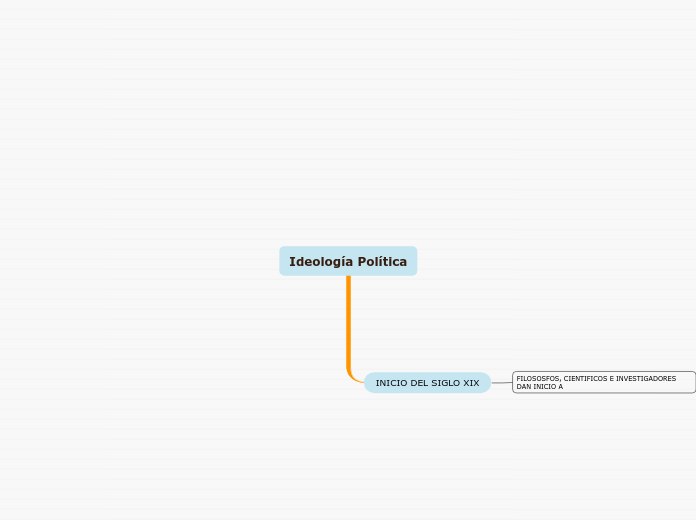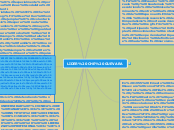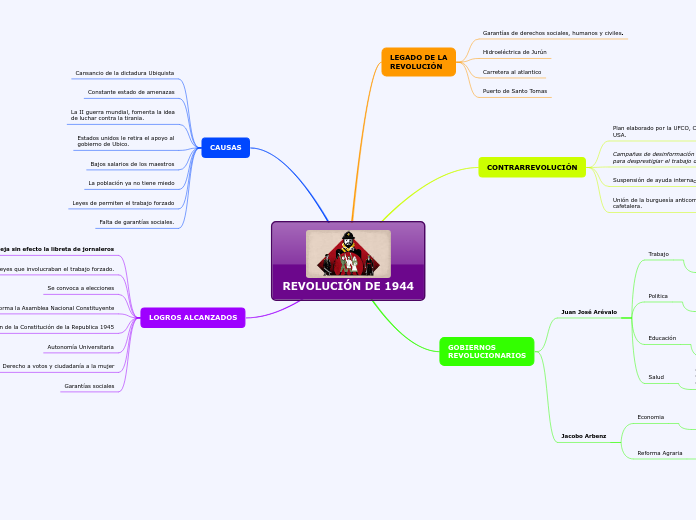Ideología Política
To name your story, you have to think about the overall message and what you want your audience to understand from the story. Also, make it relevant and easy to remember.
INICIO DEL SIGLO XIX
FILOSOSFOS, CIENTIFICOS E INVESTIGADORES DAN INICIO A
MARXISMO
The middle of the story is where you add layers of complications that will lead to the end. Reveal more about the character's journey. Did their personality go through changes? How did they overcome the challenges? And as you build up the story’s central conflict, make it more personal to that character. Also, from the middle act, you have to lead into the final act.
ACTIVISMO OBRERO
Your character(s) need(s) motivation in order to solve the challenge(s).
MATERIALISMO
Why does your character need to confront this challenge? What does he/she expect to accomplish by solving it?
See a few examples:
- will marry in 3 days
- can fix the mistakes of the past
INICIA A PARTIR DE UNA IDEA TOTALMENTE CRONTARIA AL IDEALISMO QUE CONSIDERA A LA MATERIA COMO UN SIMPLE REFLEJO
LIBERALISMO
In the beginning of the story (or the exposition), you will need to introduce the setting and characters. You might also want to introduce the main conflict. This part of the story is important because it gives the reader necessary background information and maybe even a first insight into a character’s personality.
DEMANDABA UN CAMBIO PARA TENER LOS MISMOS DERECHOS QUE LOS PRIVILEGIADOS
The setting (time & place) of a story can change throughout the plot.
DEMOCRACIA
Sensory details include sight, sound, touch, smell, and taste. These details are important because they create depth in your setting.
See a few examples below:
- the smell of fresh bread
- the scent of freshly cut grass
- rain falling onto the windshield etc.
AUTONOMIA MORAL
The weather is an important element in your story because it can highly influence the ambiance and the mood of the characters.
UTOPIA
The time of the story can also change. It can describe the event of a single day or can include an entire year's plot. Anyway, don't forget to mention it.
INDIVIDUALISMO
Your story can take place wherever your imagination will take you to.
For example: in an elevator, in an enchanted forest, etc. Don't forget to give details of the environment each time the setting changes, otherwise, the story can be confusing. Also, mention the seasons as each of them has unique weather and events.
CONSERVADURISMO
The ending of a story is essential. We all know that if the ending is weak, what happened before loses its importance. So make it unpredictable, but fair. A resolved ending answers all the questions and ties up any loose threads from the plot.
ES MEJOR SI PERMANECE TODO IGUAL
This is the closure section of the story.
See examples of possible outcomes below:
- all problems have been solved
- it's clear how each one of your characters ends up
- your main character is transformed by the challenge
RELIGIÓN
Try answering these questions in order for you to come up with a closure:
- Have all problems been solved?
- Is it clear what happens with all your characters in the story?
- Has the challenged transformed your main character?
- How do the characters feel in the end?
ECONOMIA
SOCIEDAD
Try answering these questions to come up with a closure:
- Have all the problems been solved?
- Is there a clear picture of what happens with each character in the story?
- Has the challenge transformed your main character?
- How do the characters feel in the end?










